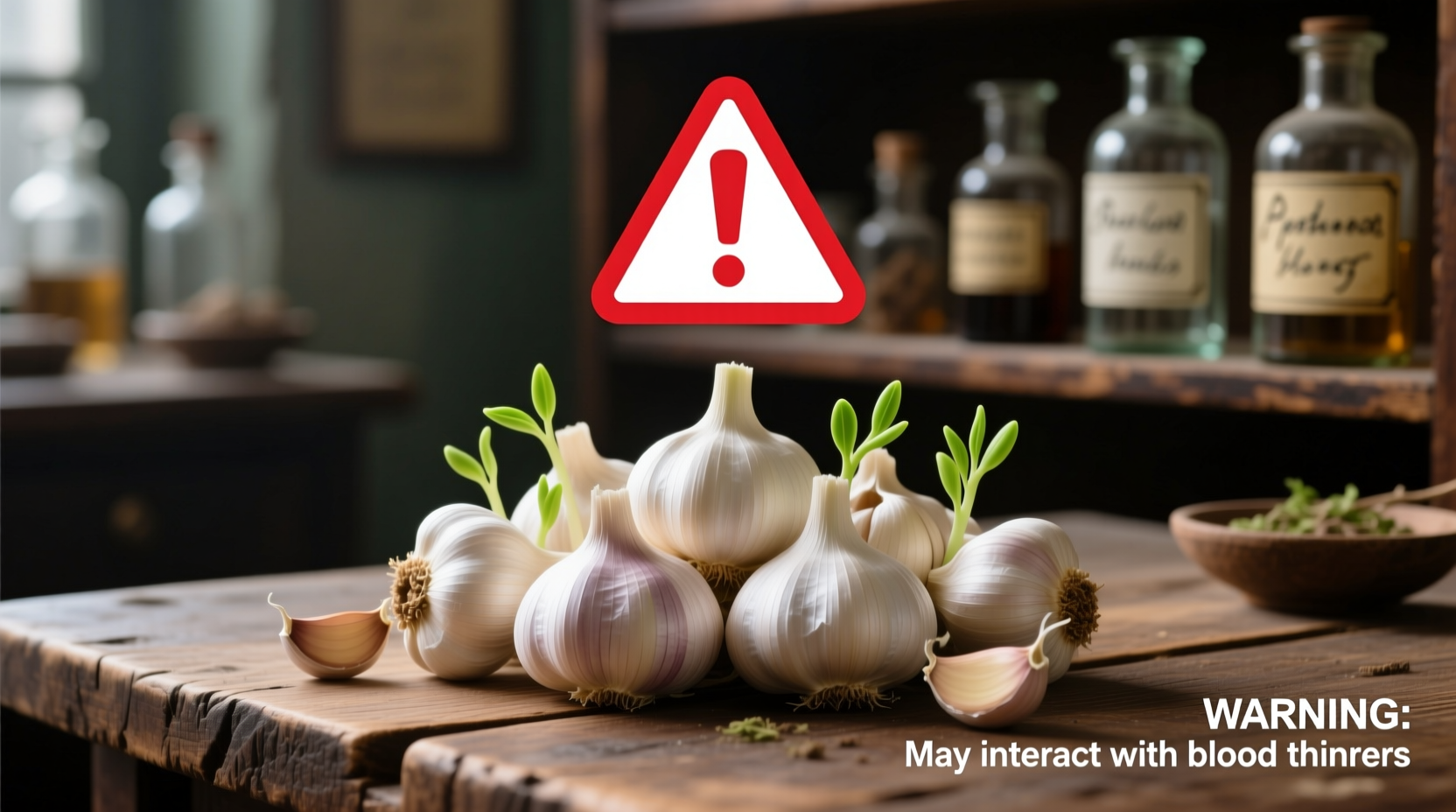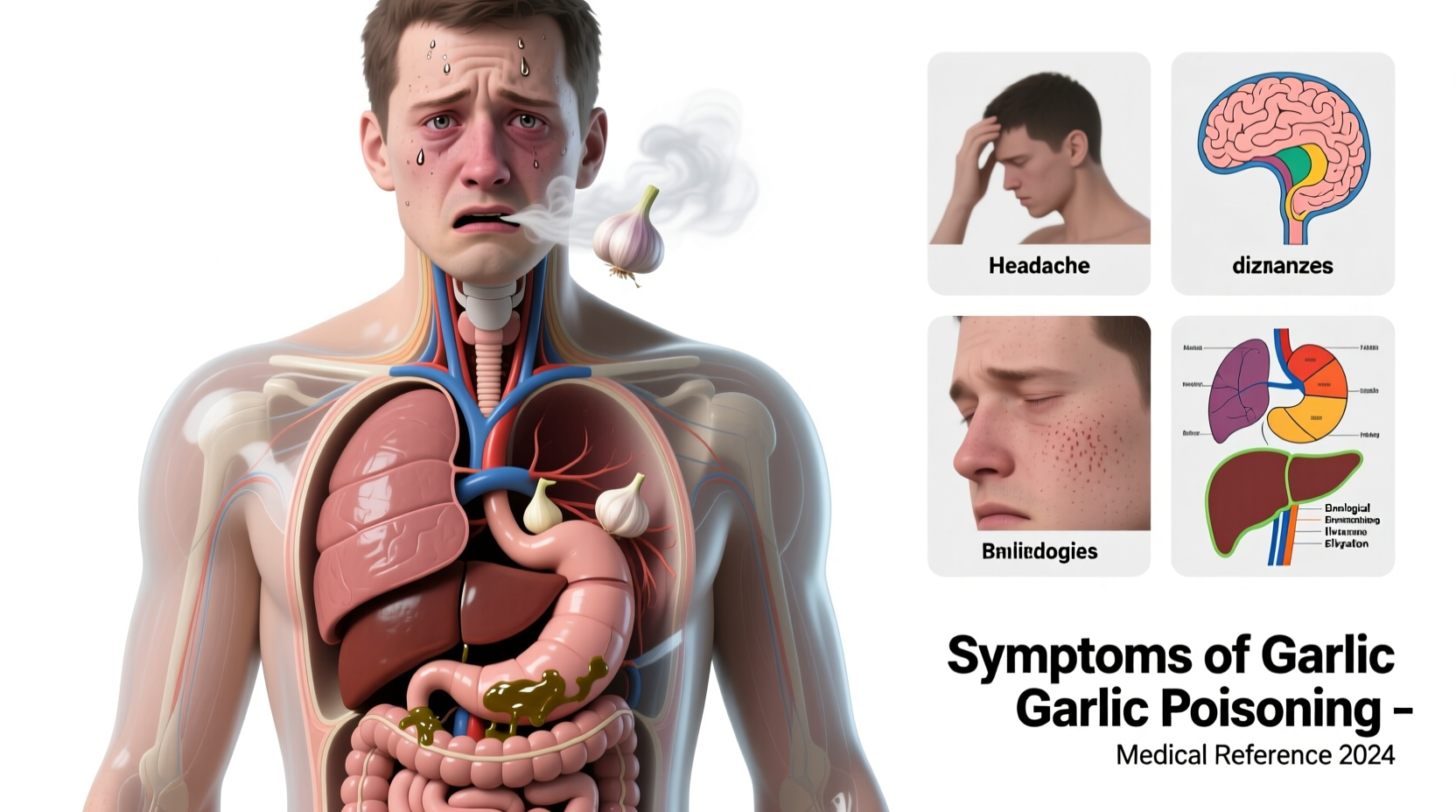Garlic poisoning in humans is rare from normal dietary consumption but can occur with excessive intake. Key symptoms include severe gastrointestinal distress (nausea, vomiting, diarrhea), bad breath and body odor, heartburn, and in extreme cases, bleeding disorders or anemia. Seek immediate medical attention if experiencing blood in urine/stool, unusual bruising, or difficulty breathing after consuming large amounts of raw garlic.
While garlic is celebrated for its health benefits and culinary versatility, understanding the potential risks of overconsumption is crucial for safe enjoyment. As someone who's researched historical spice applications across cultures, I've seen how traditional wisdom often balanced garlic's potent properties with careful usage guidelines. This guide provides medically accurate information about garlic-related reactions, distinguishing between common digestive discomfort and true poisoning scenarios.
Garlic Reactions vs. True Poisoning: Understanding the Difference
Before diving into symptoms, it's essential to distinguish between typical digestive reactions to garlic and actual poisoning. Most "garlic discomfort" stems from normal digestive responses rather than toxic effects. True garlic poisoning in humans is exceptionally rare from dietary consumption alone and typically requires consuming extraordinarily large quantities.
| Typical Garlic Reaction | True Garlic Poisoning |
|---|---|
| Mild stomach upset after 1-2 cloves | Severe symptoms after consuming 10+ raw cloves |
| Temporary bad breath | Persistent garlic odor in breath/sweat for days |
| Occasional heartburn | Severe gastrointestinal bleeding |
| Passing with digestion | Requires medical intervention |
Common Symptoms of Excessive Garlic Consumption
When garlic intake exceeds your body's tolerance, symptoms typically appear within 30 minutes to several hours. The severity generally correlates with the amount consumed and individual sensitivity.
Mild to Moderate Symptoms
- Gastrointestinal discomfort: Bloating, gas, abdominal cramps, and diarrhea
- Heartburn and acid reflux: Especially when consuming raw garlic on empty stomach
- Bad breath (halitosis): Persistent garlic odor that brushing doesn't eliminate
- Body odor: Garlic compounds excreted through skin pores
- Headaches: In sensitive individuals, particularly with raw garlic
Severe Symptoms Requiring Medical Attention
- Excessive bleeding: Nosebleeds, bleeding gums, or prolonged bleeding from minor cuts
- Anemia symptoms: Fatigue, weakness, pale skin from potential red blood cell damage
- Allergic reactions: Hives, swelling, difficulty breathing (rare but serious)
- Low blood pressure: Dizziness or fainting in sensitive individuals
- Low blood sugar: Particularly concerning for diabetics on medication

Symptom Timeline: What to Expect
Understanding when symptoms typically appear helps determine appropriate responses:
- 0-30 minutes: Burning sensation in mouth or throat (especially with raw garlic)
- 30-120 minutes: Onset of gastrointestinal symptoms like nausea or stomach cramps
- 2-6 hours: Peak digestive symptoms, potential headache development
- 6-24 hours: Body odor becomes noticeable, potential worsening of symptoms
- 24+ hours: Severe cases may show signs of anemia or bleeding disorders
Who's Most at Risk for Garlic-Related Issues
Certain populations face higher risks from excessive garlic consumption:
- Individuals with bleeding disorders: Garlic may enhance bleeding risk, particularly before surgery
- Pregnant women: Large amounts might stimulate uterine contractions
- People with IBS: Garlic's fructans can trigger digestive symptoms
- Those on blood thinners: Potential interaction with medications like warfarin
- Infants and young children: Developing digestive systems are more sensitive
According to the National Institutes of Health, "While garlic is generally safe when consumed in amounts typically found in foods, high doses of garlic supplements have been associated with increased bleeding risk and gastrointestinal symptoms." (NIH, 2023)
When to Seek Immediate Medical Help
Most garlic-related discomfort resolves with time and reduced consumption. However, contact a healthcare provider immediately if you experience:
- Blood in urine or stool after garlic consumption
- Unusual bruising or prolonged bleeding from minor injuries
- Difficulty breathing or facial swelling (signs of allergic reaction)
- Vomiting blood or coffee-ground-like material
- Symptoms lasting more than 48 hours without improvement
The Mayo Clinic notes that "garlic supplements can interact with certain medications, particularly blood thinners, and may increase the risk of bleeding during and after surgery." (Mayo Clinic, 2024)
Medical Treatment Approaches
If you seek medical attention for suspected garlic poisoning, healthcare providers typically focus on symptom management rather than specific antidotes, as no direct antidote exists for garlic toxicity.
- Supportive care: Hydration and monitoring of vital signs
- Gastrointestinal protection: Medications to reduce stomach acid
- Bleeding management: Vitamin K or blood products in severe cases
- Allergy treatment: Antihistamines or epinephrine for allergic reactions
- Discontinuation: Stopping further garlic consumption is primary treatment
Preventing Garlic-Related Issues
Enjoy garlic safely with these practical strategies:
- Start with small amounts: Especially if new to regular garlic consumption
- Cook garlic when possible: Cooking reduces the potency of allicin compounds
- Avoid empty stomach consumption: Pair with other foods to reduce irritation
- Monitor supplement intake: Follow recommended dosages for garlic supplements
- Consult your doctor: If taking blood thinners or before surgery
- Know your limits: Pay attention to how your body responds to different amounts
Traditional culinary practices worldwide often incorporate garlic in moderation, recognizing its powerful properties. Historical spice trade records show that ancient cultures developed consumption guidelines through generations of experience—wisdom that modern science now supports with clinical evidence.











 浙公网安备
33010002000092号
浙公网安备
33010002000092号 浙B2-20120091-4
浙B2-20120091-4